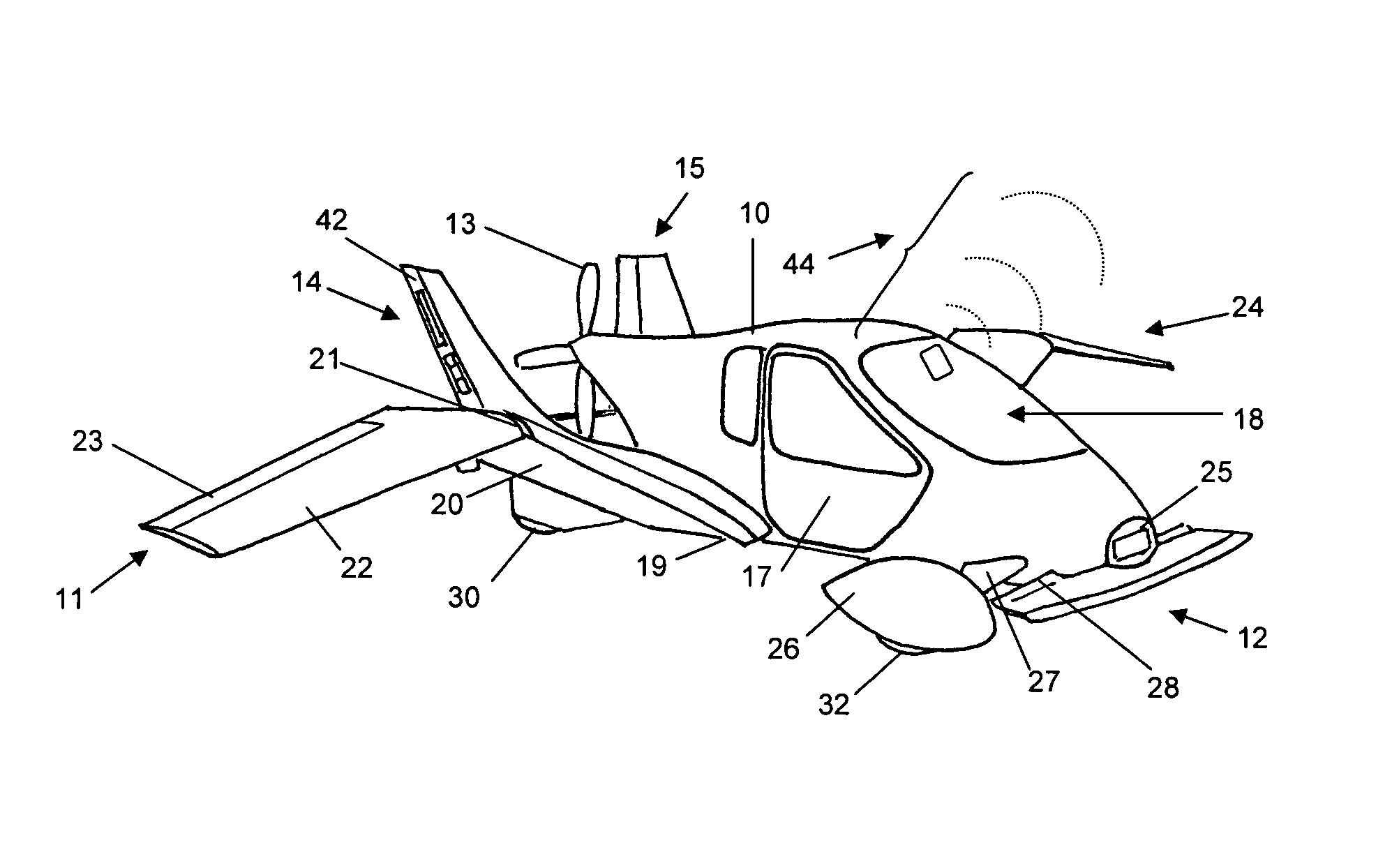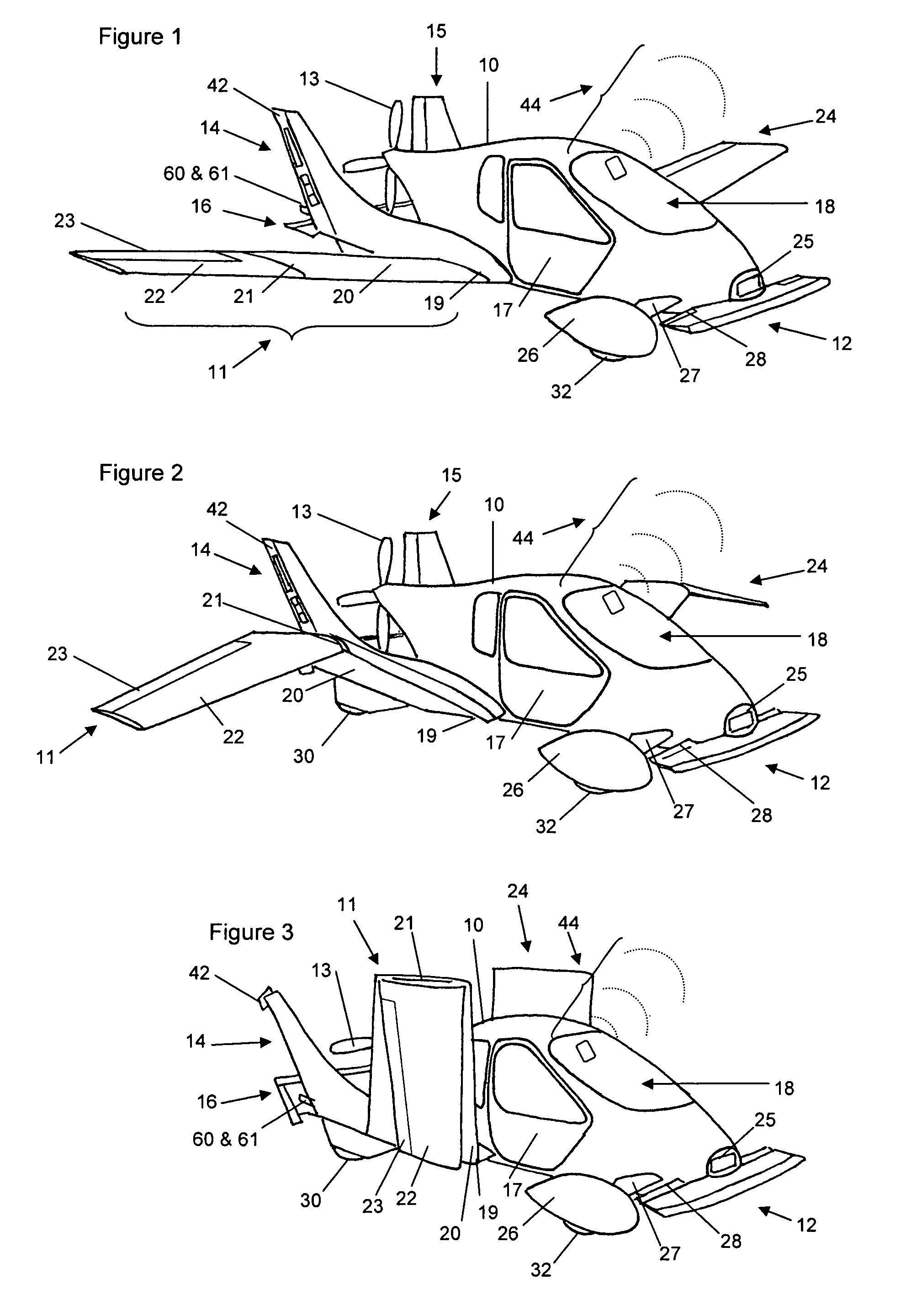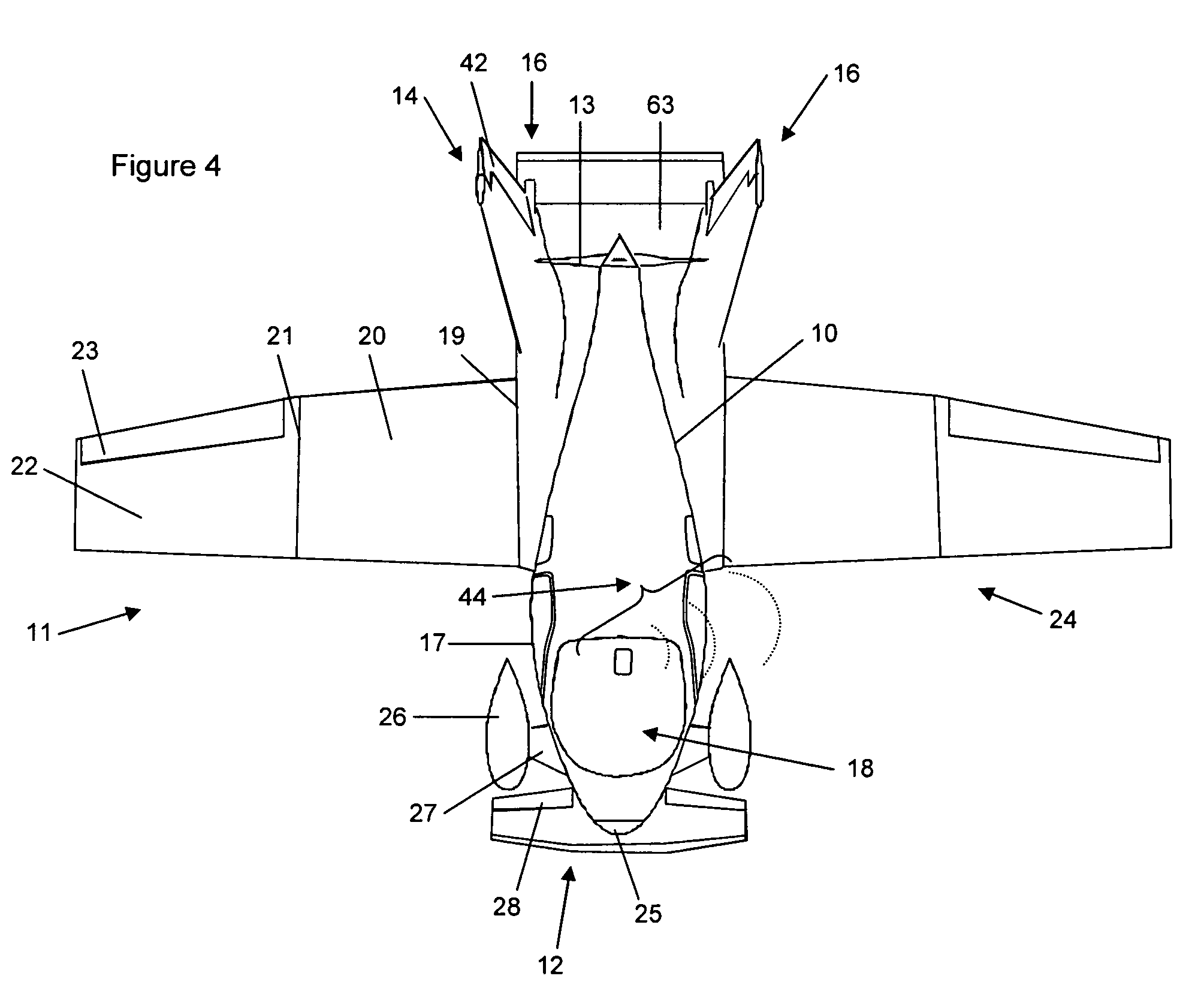Roadable aircraft with folding wings and integrated bumpers and lighting
a technology of folding wings and integrated bumpers, applied in the field of aircraft, can solve the problems of unattractive pilot/customer additional labor, no concept which has met with commercial success, and limited practicality of aerocars for most pilots
- Summary
- Abstract
- Description
- Claims
- Application Information
AI Technical Summary
Benefits of technology
Problems solved by technology
Method used
Image
Examples
Embodiment Construction
[0050]In one embodiment of the invention, the commercial viability may be enhanced by the minimization of the number and complexity of mechanisms required to convert between a driving and flying mode, while at the same time, maintaining a design that will fly in a manner that will be familiar to most general aviation pilots, and drive in a manner that is familiar to most drivers. Another advantage of the present invention can include the ability to change between the driving and flying modes without the operator leaving the cockpit / driver's seat, in contrast to many vehicles in the prior art. No manual “bolting” or “unbolting” is required, simply a typical pre-flight inspection that pilots are already accustomed to performing on their aircraft. Another advantage of the present invention may be the protection of the propeller due to its location relative to aerodynamic surfaces.
[0051]One embodiment of the invention can contain deformable aerodynamic surfaces as bumpers, thereby impro...
PUM
 Login to View More
Login to View More Abstract
Description
Claims
Application Information
 Login to View More
Login to View More - R&D
- Intellectual Property
- Life Sciences
- Materials
- Tech Scout
- Unparalleled Data Quality
- Higher Quality Content
- 60% Fewer Hallucinations
Browse by: Latest US Patents, China's latest patents, Technical Efficacy Thesaurus, Application Domain, Technology Topic, Popular Technical Reports.
© 2025 PatSnap. All rights reserved.Legal|Privacy policy|Modern Slavery Act Transparency Statement|Sitemap|About US| Contact US: help@patsnap.com



